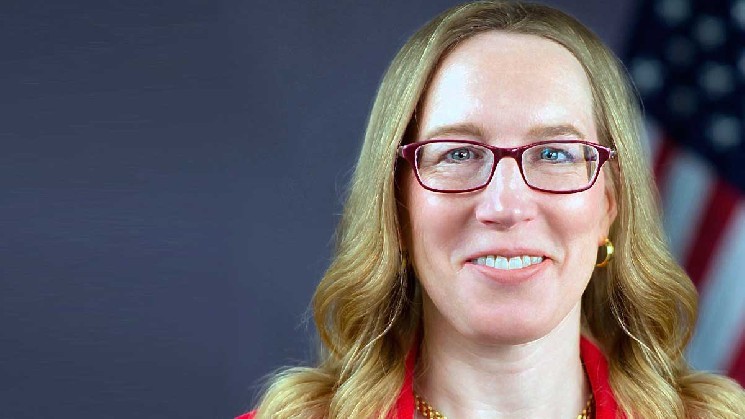SEC’s “Crypto Mom” Peirce Heralds New Era for Cryptocurrency Regulation
Regulatory Landscape Shifts as SEC Commissioner Apologizes for Past Approach
In a significant pivot that signals changing winds in Washington’s approach to digital assets, Securities and Exchange Commission (SEC) Commissioner Hester Peirce has publicly acknowledged the dawn of a more favorable regulatory environment for the cryptocurrency industry. Speaking at the recent Coin Center Dinner, Peirce—affectionately known in crypto circles as “Crypto Mom” for her historically supportive stance—offered both an apology for past regulatory hostility and an optimistic outlook for the sector’s future under new leadership.
“I regret that I was unable to persuade my colleagues to give you a chance during my tenure at the SEC,” Peirce told attendees, expressing personal disappointment over the agency’s previously restrictive approach. Her candid admission reflects the frustration many cryptocurrency advocates experienced during years of regulatory uncertainty. Peirce emphasized that this uncertainty has now given way to greater clarity, encouraging industry participants to “use this time to build structures that will enhance safety, prosperity, and happiness.”
Trump Administration Brings Significant Policy Shift at SEC
The cryptocurrency industry has witnessed a remarkable transformation in the SEC’s regulatory posture over the past year, coinciding with the change in presidential administration and key leadership appointments. Among the most consequential changes was the naming of Paul Atkins as the Commission’s chief executive, a move that many industry observers viewed as a harbinger of a more crypto-friendly regulatory approach. Under this new leadership, the SEC has launched several initiatives signaling its evolved perspective on digital assets.
Perhaps most notably, the Commission established a dedicated Cryptocurrency Task Force headed by Commissioner Peirce herself. This specialized team represents a fundamental shift from treating cryptocurrency as a regulatory problem to viewing it as an innovation requiring thoughtful, tailored oversight. Additional signs of the changing regulatory landscape include the dismissal of several high-profile lawsuits against cryptocurrency companies that had been initiated under previous leadership, suggesting a more collaborative approach to industry governance rather than adversarial enforcement.
“Project Crypto” Initiative Aims to Modernize Digital Asset Framework
In what may be its most forward-looking move yet, the SEC has launched “Project Crypto,” an ambitious initiative designed to modernize the regulatory framework governing digital assets. This project acknowledges that many existing securities regulations were crafted long before blockchain technology and cryptocurrencies existed, creating inherent challenges when applying these rules to novel digital innovations. By reconsidering and potentially revising these frameworks, the SEC appears to be working toward regulations that both protect investors and accommodate technological advancement.
The establishment of Project Crypto represents a marked departure from the previous administration’s approach, which often attempted to force new technologies into old regulatory boxes. Industry leaders have cautiously welcomed this development, with many expressing hope that it signals a more nuanced understanding of blockchain technology’s unique characteristics and potential benefits. This initiative may ultimately provide the cryptocurrency industry with the regulatory clarity it has long sought, potentially unlocking greater institutional adoption and mainstream acceptance.
Former Chairman Gensler’s Approach Drew Industry Criticism
The SEC’s current direction contrasts sharply with its posture under former Chairman Gary Gensler, whose tenure was characterized by skepticism toward cryptocurrencies and aggressive enforcement actions. Gensler frequently maintained that most cryptocurrencies qualified as securities under existing law, bringing them firmly within the SEC’s regulatory purview. This interpretation led to a series of high-profile lawsuits against major cryptocurrency companies, creating significant legal uncertainty and compliance challenges across the industry.
Gensler’s “regulation through litigation” strategy drew substantial criticism from industry participants and some regulators alike, including Commissioner Peirce, who often found herself at odds with the agency’s leadership. Critics argued that this approach stifled innovation, drove cryptocurrency businesses offshore, and failed to provide the clear regulatory guidelines needed for industry development. Instead of fostering compliance through transparent rulemaking, the previous administration’s enforcement-first approach created an environment where companies struggled to understand how to operate within legal boundaries.
Industry Optimism Tempered with Practical Challenges
While the cryptocurrency sector has welcomed the SEC’s new direction, industry leaders remain cognizant that significant challenges lie ahead. Regulatory frameworks for digital assets are still evolving, and many fundamental questions about classification, compliance requirements, and jurisdictional boundaries remain unresolved. Additionally, the implementation of more crypto-friendly policies must balance innovation with appropriate investor protections—a delicate balance that even supportive regulators like Peirce acknowledge requires careful consideration.
For cryptocurrency companies and investors, this regulatory transition period presents both opportunities and uncertainties. The dismissal of previous lawsuits and the establishment of new initiatives suggest a more favorable environment, but the industry continues to operate in a complex regulatory landscape involving multiple agencies beyond just the SEC. As Commissioner Peirce called for “rapid progress” in her address, her words reflected both optimism about the new regulatory direction and recognition that meaningful change requires sustained effort. For an industry that has weathered years of regulatory skepticism, the current shift represents not an endpoint but rather the beginning of what many hope will be a more collaborative relationship between innovators and regulators in the digital asset space.
This article is provided for informational purposes only and does not constitute investment advice.


